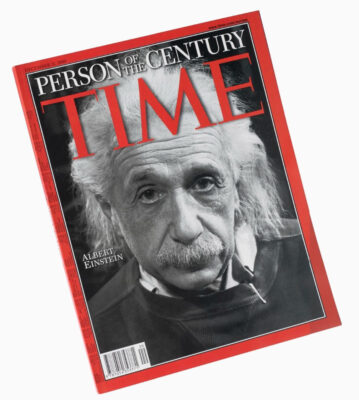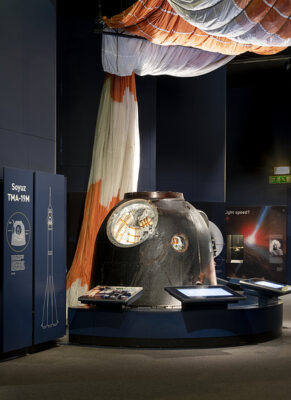
Engineers and good friends Dame Stephanie ‘Steve’ Shirley CH and Prof. Dr Larissa ‘Lara’ Suzuki have grown up generations apart, but both work in one of the newest areas of engineering: software engineering.
Working in this field has opened up a wonderful, creative, and richly rewarding career for both women.
Dame Steve and Professor Lara come together to discuss their own experiences and what can be done to encourage more young women and girls to take up successful engineering careers.
Tell us a bit about yourselves and how you got into engineering?
Dame Steve: I wanted to be the world’s greatest mathematician – solving Fermat’s Last Theorem was my aim! But I soon realised I did not have it in me to contribute in that way. Luckily, the computer industry came along so I’m classed as a ‘late pioneer’. Then in 1984 the Engineering Council recognised the chartered British Computing Society, so I became a systems engineer, to be later elected as one of the less than 20% women Fellows of the Royal Academy of Engineering in 2001.

Professor Lara: I have always been fascinated with things that move or change state, like machines, cars and electronic equipment. My main curiosity when I was a child was to understand the mystery behind those things that made them behave the way they did, and how could I make them do what I wanted them to do instead.
The work of engineers and how they made our lives much richer really inspired me back then. I remember thinking ‘Wow! Engineers are like doctors for the world!’ Several years later I find myself working as a science researcher, a professor at NASA Jet Propulsion Laboratory (JPL) and at University College London (UCL) helping to build the Interplanetary Internet, and working as a Technical Director at Google.
Who were your engineering heroes?
Dame Steve: Going back to the 19th century, I was inspired by the iconic photograph of a vain Isambard Brunel standing before the giant chains of the SS Great Eastern. I’ve also seen and admired the Clifton Suspension bridge; and have read that his Thames Tunnel is still in use.

A modern engineer I admire is James Dyson (whom I have had the privilege of meeting). He has some 7,000 patents to his name (in mechanical engineering, electronics, electromagnetics and software engineering) and his products are beautifully styled. I admire also his tenacity: apparently there were over 5,000 prototypes of the Dyson cleaner before he was satisfied. And the management skill it must have taken to build his organisations which together employ 4,500 people.
Someone from my own field is Sophie Wilson who played a significant role in developing the Acorn computer and its ARM architecture.
Lastly, in the 1950’s I worked in Tommy Flowers’ division at the Post Office Research Station in North London. He was a remarkable engineer, responsible for an early computer (used by the WWII Codebreakers at Bletchley Park), for the first electronic telephone exchange and the Premium Bond computer ERNIE. Furthermore, he was an inspirational manager – the sort of manager I aspired to become.
Professor Lara: Growing up I never heard of any female computer scientists. The books I read – even when I was a young teenager attending University – did not talk or mention any women engineers.
My dad was a civil engineer and loved watching documentaries. I remember watching some and really getting fascinated with As a child I remember that for many years – until I came to the UK in 2010 – I had a poster of Albert Einstein above my bed.

Unfortunately, despite their astonishing work, women in engineering have been erased from history. My passion for engineering and technology and a deep need for answers was what kept me in the field and moving forward.
How has the profession changed over the generations?
Dame Steve: The profession has become more interdisciplinary, more digital, more aware of environmental issues. Automation and robotics have become every day; I think today’s exciting things are electric vehicles and exploring space.

Professor Lara: I think that technology and engineering became more embedded into everything that surrounds us and in such a way that now people want to wear ‘technology’ and we have a myriad of wearable devices available to us. The urge I had in the past to get computers and electronics to do what I wanted them to do are being realised with AI which can augment and become our assistants when used responsibly.
Did you face any barriers working in the profession and if so, how did you overcome them?
Dame Steve: I faced significant barriers because of my gender. Women of my generation were not welcome in graduate roles, deemed incapable of responsibility and were constantly patronised. It was to counter this sexism that I founded my own software house in 1962, a company of women, a company for women. People laughed. For this was at a time when software was given away for free with the hardware; no-one would buy software, least of all from a woman.
Professor Lara: Yes. I believe that some aspects may have improved but a lot of challenges remain. There is still a lot of sexism in industry and a need to put women down when they are reaching heights that are supposedly reserved for men.
I find that today there is a lot of talk and social events around increasing the numbers of women engineers. However, when it comes to action and support, very little is done. I think it is really time for all initiatives supporting women in engineering to refocus on the main purpose of the need to support women and the remaining challenges they face entering and remaining in the field.
What interesting areas do you see in engineering going in the future? What should we look out for?

Dame Steve: Engineering addresses strategic concerns; I’d foresee stirring developments in environmental engineering and in virtual reality, both of which are still in their infancy. We live in exciting times!
Professor Lara: I think we can all agree that artificial intelligence has advanced significantly in the past one to two years. My first steps on AI were about 15 years ago, before GenAI and Deep Neural Networks. At that time, we had limited power due to hardware, algorithms, and data constraints.
We have now overcome these to a point that AI is very well disseminated, even on the tiniest devices and in outer space. I am very hopeful for medical and space applications and the creation of smart and sustainable smart cities with the assistance of artificial intelligence. For that to happen, it is important for us to have the engineering talent and that AI applications are moved more towards the important areas such as human wellbeing and survival.
What advice would you give to young women and girls today who might want to become engineers?
Dame Steve: If you’re a graduate, I’d suggest the Women’s Engineering Society, but if you’re still at school a focus on maths and science in school is a good start, and taking part in any STEM programmes available, such as workshops and hands-on projects.
Professor Lara: I would tell them that working as a computer scientist and engineer you will get to dream up all the amazing inventions that no one else has thought of yet, and then design and develop them.
The power to change the world today is at our fingertips in multidisciplinary and diverse teams, and the fast-paced innovation of technology and applications that benefit humankind will certainly fill them with joy.
If you’re interested in becoming an engineer, you can visit the Engineers gallery at the Science Museum which celebrates engineers and how they shape the world we live in.
If you are early on in your engineering career, find out more about the QEPrize Ambassador Network that helps to inspire the next generation to follow successful engineering careers.
* Figures taken from the Women in Engineering report, Engineering UK, 2022.